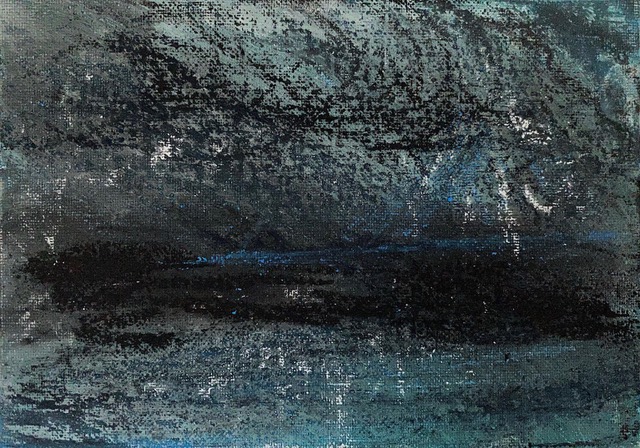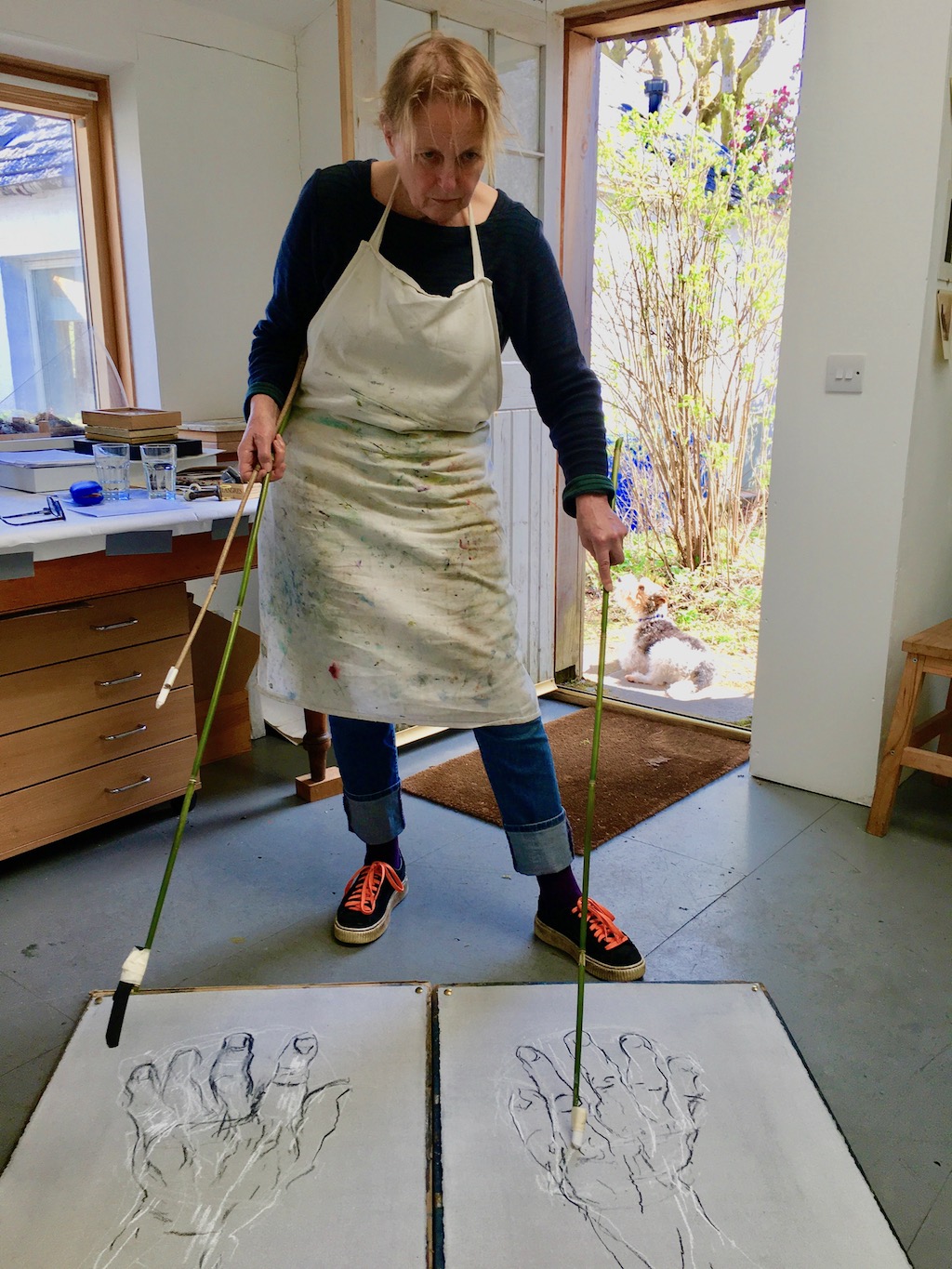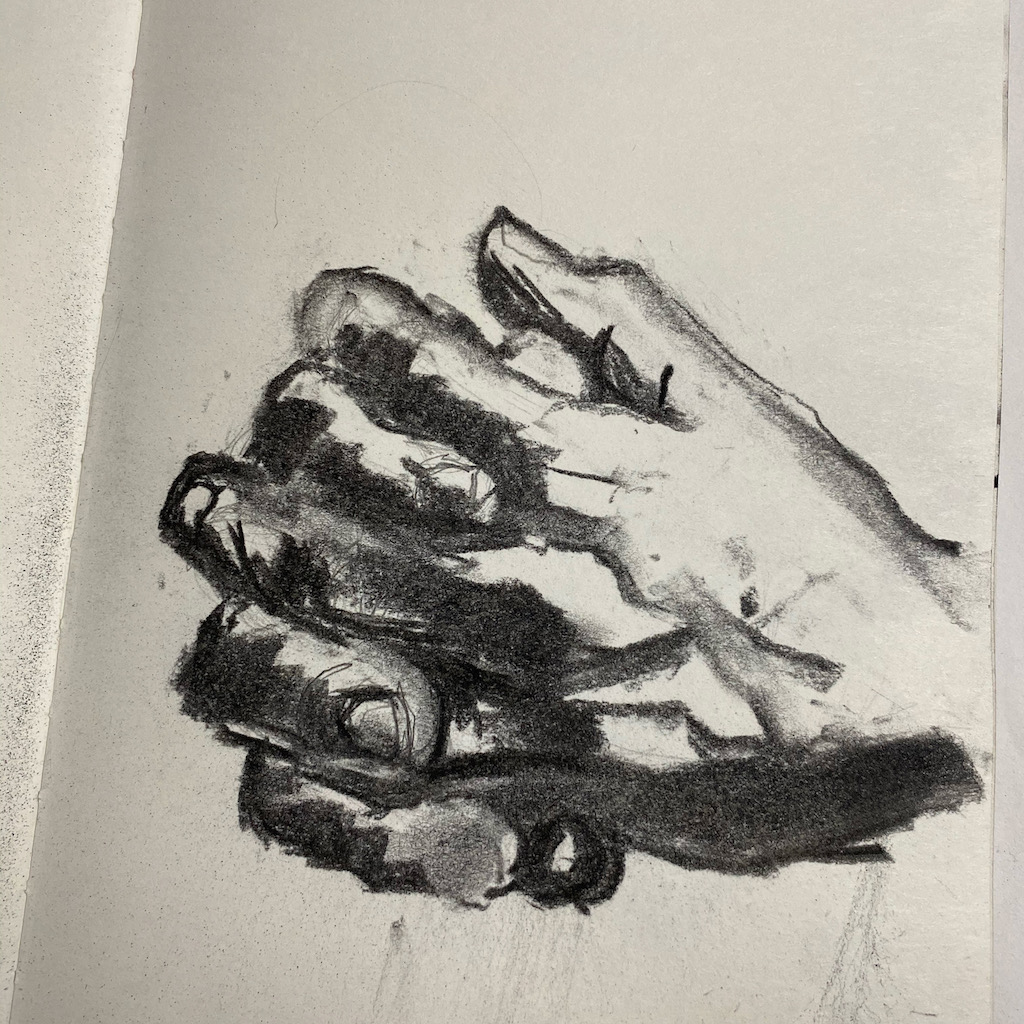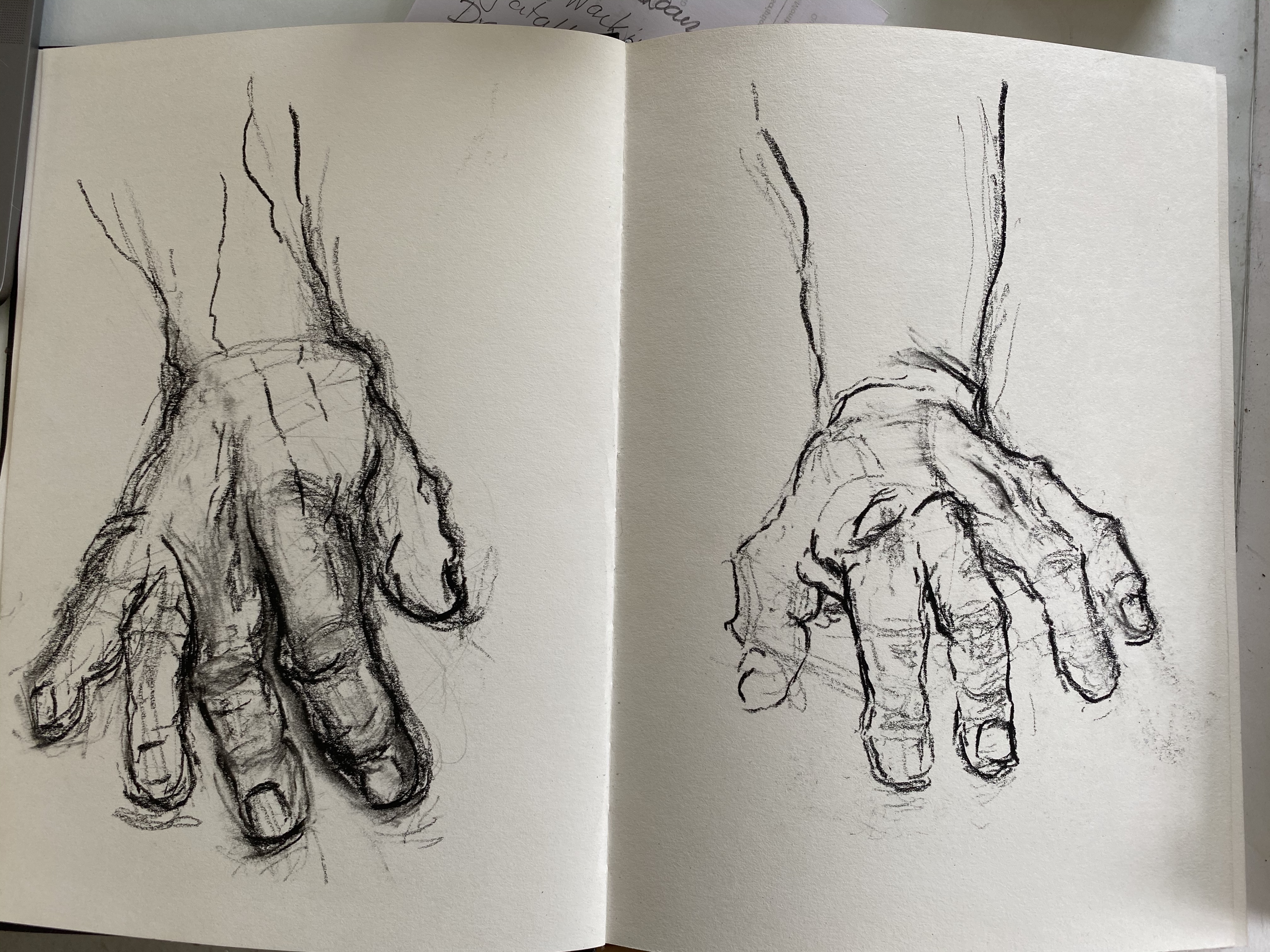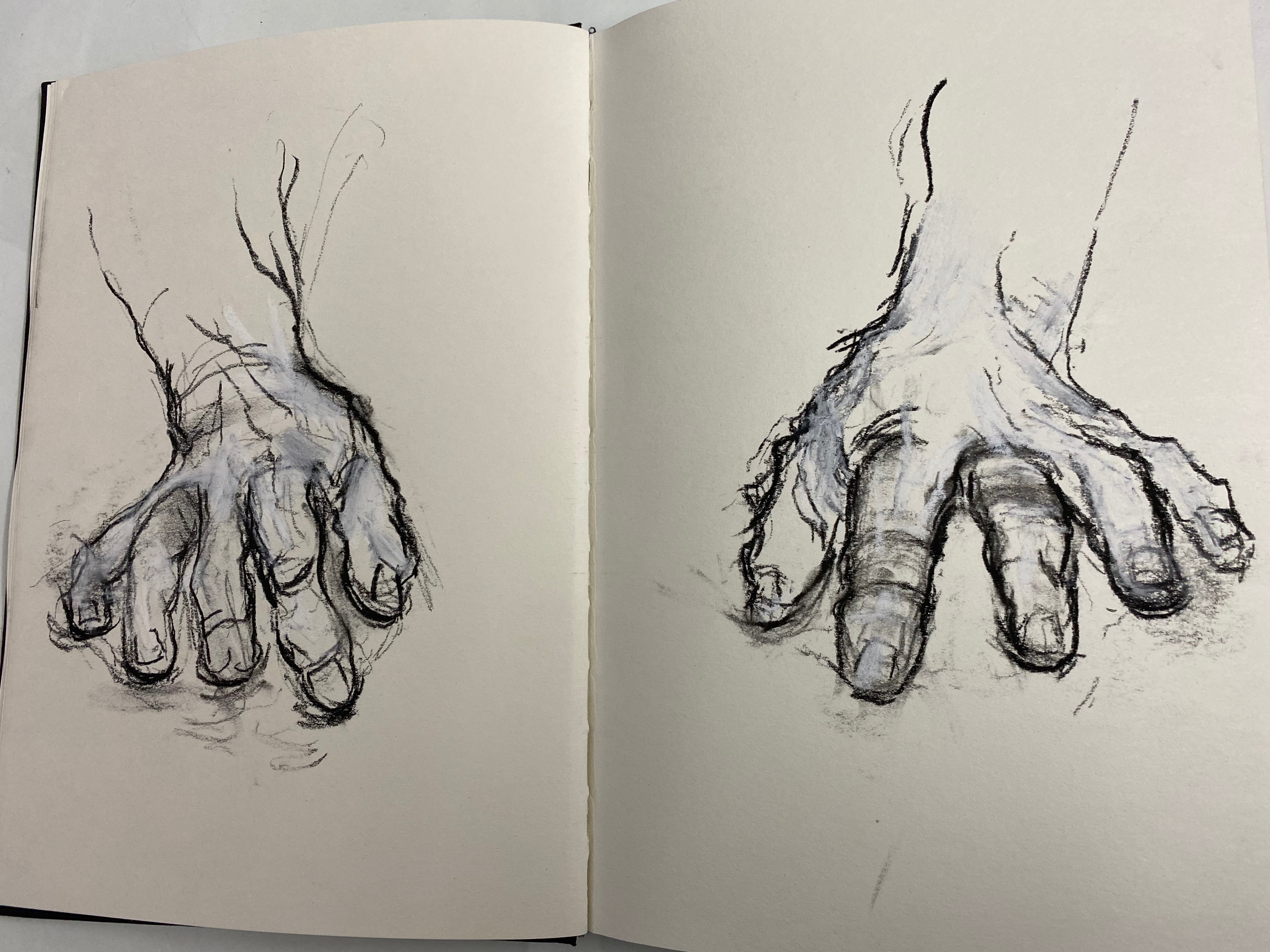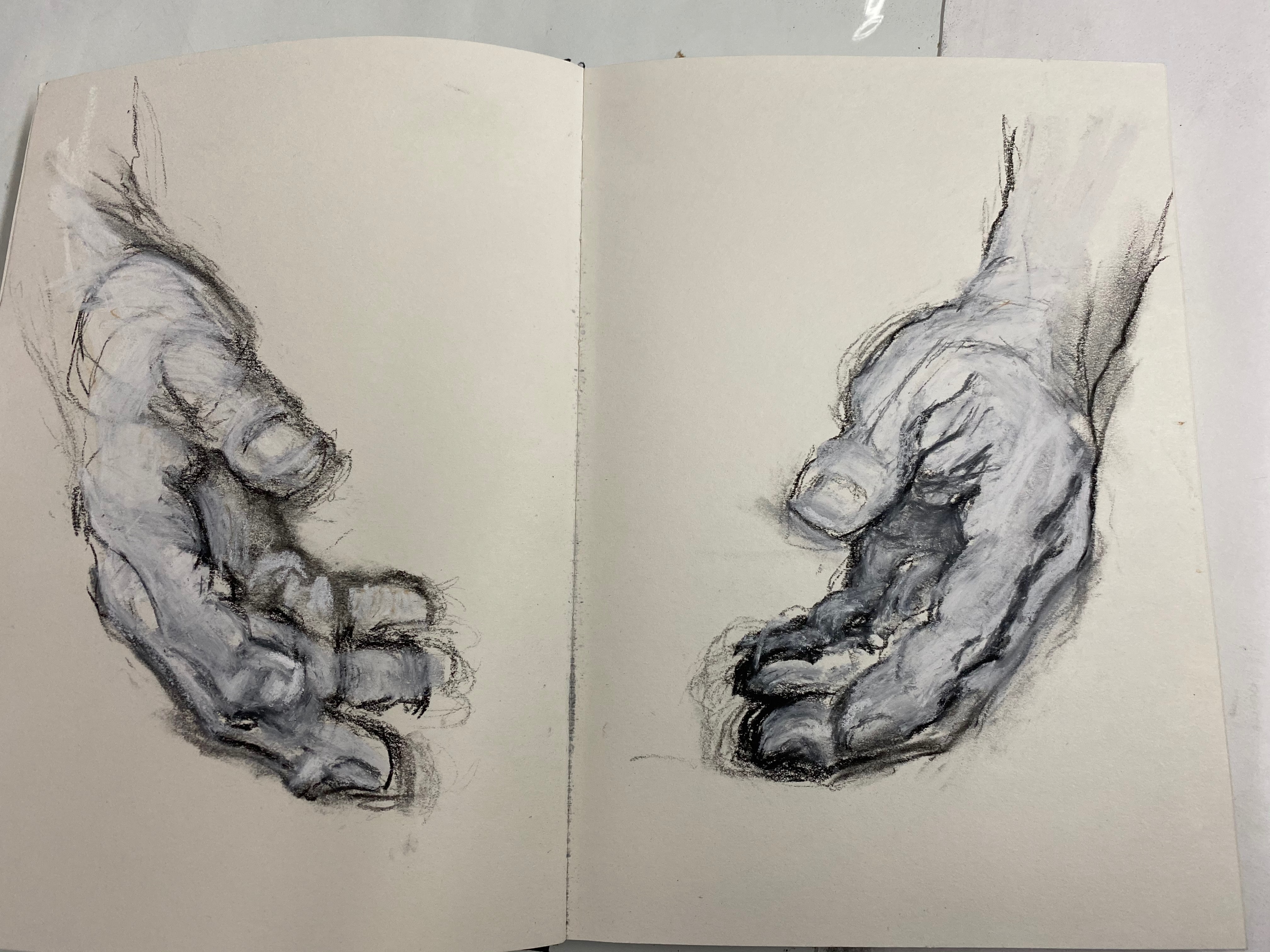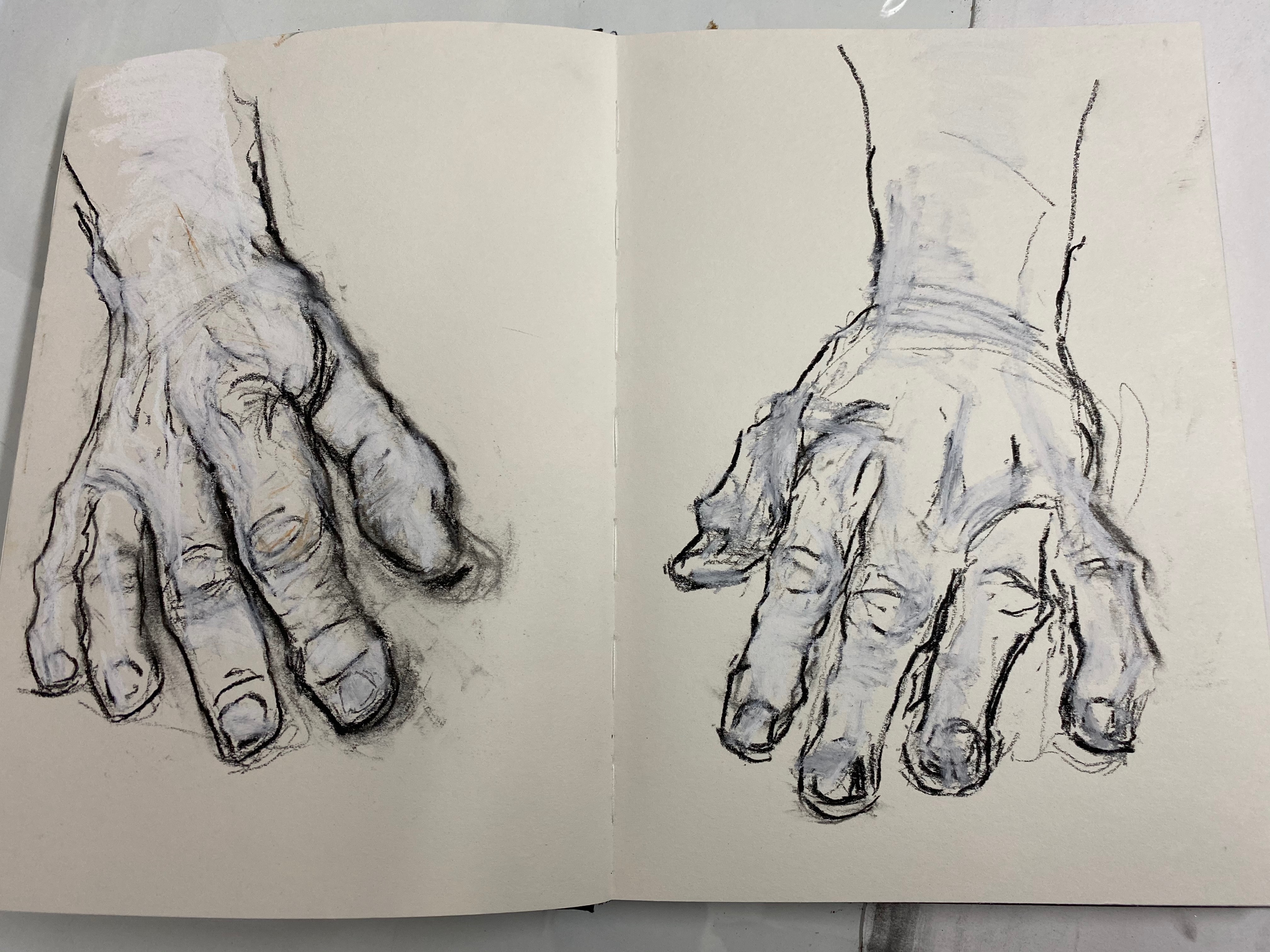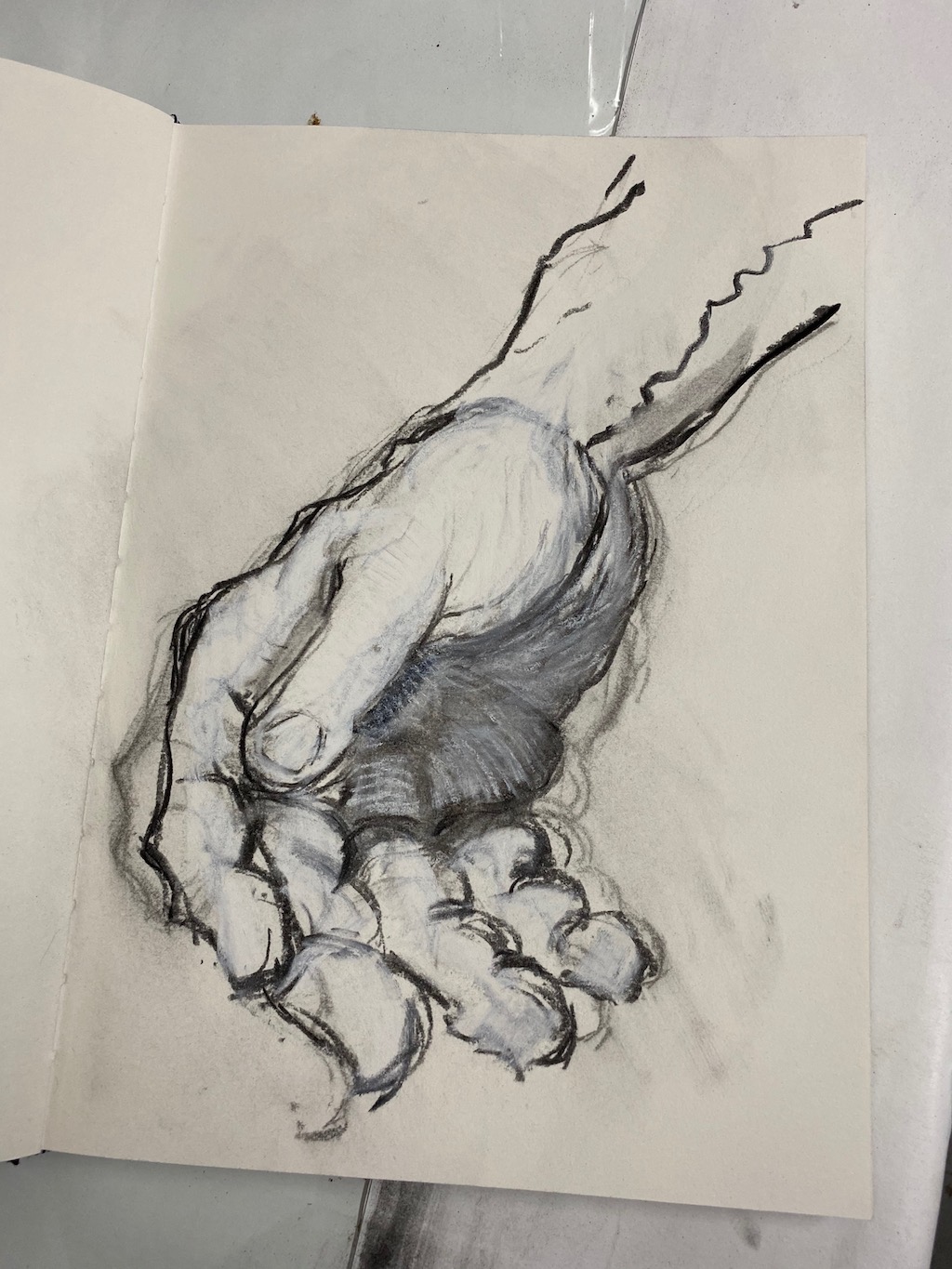
After a day of walking no further than the outside latrine (these days known as a composting loo) yesterday I decided to walk to the pier which has a cafe, shop and Wi-Fi hot spot. There was no point waiting for the weather to improve and so, although I didn’t put on my waterproof trousers, I carefully packed them, along with the Wi-Fi technology, into a small backpack. Usually it’s full of painting materials, with brushes tied to sticks emerging from the top, so on this occasion I felt rather different, like the well-equipped guests we host at home with all the latest textiles and boots made from modern materials which I presume derive from the petrochemical industries. No wool, little if any cotton, just varying degrees of breathable waterproof plastics.
I set off at a brisk pace, having gathered that it took an hour, but if I stuck my thumb out I might get a lift. I was lucky and did, just before the steep assent to get to the middle of the island. It’s funny how you can build things up and an hour each way had felt too much out of my day, despite the fact that actually I have nothing to do! It was also because when here in the past I had a sore hip which got worse as I walked. With two yoga classes a week it is much improved and not a reason to hold me back. When you drop the fear or resentment and accept a thing, it becomes easier to do. I know that but I don’t often remember! My mood lifted as I set off on a little island outing to be amongst people and contact the outside world.
My main encouragement was to try to speak to my son. As it was Saturday there was a chance of speaking to him without risk of him being at work, even if he hadn’t taken my advice and asked for compassionate leave. Although I was getting over the shock, I am still haunted by such an untimely death of one so young and I grieve for the loss for my son of his closest friend. My son knew the password to his friend’s phone and laptop and his parents said he knew more than anyone about their son’s life. The last call on his phone was to my son, they often shared a flat, went on holiday together, shared the same interests and spoke several times a day. ‘Brothers’ is how they described themselves. Every night I am troubled by the thoughts of loss and was relieved to discover the radio here has rechargeable batteries so I can follow the vagaries of the BBC broadcasting schedules although I am now catching up with their repeats. I am aware that it is distraction. The soothing sound of the voice of another, telling me a story.
As my time here moves into the second week, my thoughts are also preoccupied by other concerns. One aspect of working in tourism is that our lives are determined by seasonality. Coming here at the end of the season and after a big change in our lifestyle as we give up cooking breakfast and changing beds every day, I have been very surprised by how much work it still is to divide the house in half and have strangers just through a door. It surprises me that, having given up the daily personal involvement, it has still turned out to be intrusive. Unfortunately, with this new project, we have attracted a different sort of guest and a number have proved too demanding and critical. On two occasions I have been sent a twenty point list of criticisms and it makes one wonder why these people decide to travel? Over the whole season we have had masses of appreciation, so why do I find the few dissatisfied people so troubling?
By October, we are usually exhausted. In other years, we have closed and gone away together, leaving a house-sitter in charge. Because it is the first year of a new project, we were uncertain about its success so decided instead to have a less ambitious break in November. The reason for this long-winded preamble – too much information as Norrie says – is that the question I find myself troubled by, is where has my creativity gone? Empty, depleted, uninspired are all words that describe how I feel.

Living here in this perfect wooden hut feels like being cradled in a wooden womb. There is everything you need but no extras. Lucy has thought out every concern and still kept it simple and minimal. This is deliberate as she has discovered what gives her visitors the time and space to engage with their creativity and the Bothy Project works with her to provide subsidised residencies. I know all this and last time was on one of them, so why now am I empty of ideas?
Instead, I have decided to engage with the task of simple living; something I yearn for in my everyday. Reading Outrun has helped, as it is a gripping tale of just the same desire. There is an outdoor shower here which frightened me in the past, preferring instead to boil the kettle and strip off. This time I have used the shower and, with the careful management of the wood-burner and rationing of hot water, I have managed to have a great wash in what must be the most spectacular of locations, outside, looking up at the cliffs, with the caw of the ravens overhead, everything swathed in mist.

You bring your food with you when you come here and I have enjoyed the simple eating and having small meals when I choose. I am even keeping a food diary to try and lose eight pounds. I brought a bottle of white wine which remains unfinished outside, deciding instead that it doesn’t interest me. I have read a lot and listened to the radio, but there is something missing and it is my desire to make work. Perhaps that is why I am writing so much, it feels easier than drawing, I don’t know why.
On the way home from the pier yesterday, I met a man who told there was a whole whale skeleton on the north shore. I long to walk there to see it, but the weather is misty, I am unfit and don’t know the territory. I decide on a less ambitious plan and forgo my yearning to see a whale skeleton outside a museum. Instead I go to the Singing Sands, a famous beach that squeaks as you walk, but not today! Huge forests of kelp lie, ripped out at the roots, looking like extruded car parts or specialised components for a car wash. I pick one up and feel what looks like the root, ripped away from its anchor and am surprised to find how hard it is. I expected it to be soft like a sponge.
9.10.17
Something changed today apart from the weather and I found some enthusiasm to go out and draw. I remembered some work I did on Harris which I found when packing to come here and thought there might be a thread to pick up.
The geology is the thing that moves me most about being here on Eigg. There are basalt cliffs as on the Sound of Mull, but more dramatic with chimneys and gorges to create a fascinating cliff just above my bed. There is a window next to me and so I am able to lie here watching the cliffs with the moon coming up behind them. Or watch them move in and out of mist reminding me of Faroe.
The beach is made of basalt sand just like at Old Ardtornish, but here it has a white overlay, perhaps of shell. The two layers remain apart, perhaps their weight is different but the result is a surface of intricate patterns like marbled paper, especially where the final length of a burn crosses the sand. I find a discarded plastic bucket amongst the flotsam and jetsam and, knocking out its weight of sand, take it upturned and sit in the middle of the flow, drawing the patterns with pen and ink. It’s very soothing to sit in the middle of such splendour simply making marks as a response. No plans, no destiny just enjoying the engagement of joining the process of intricate pattern making.







